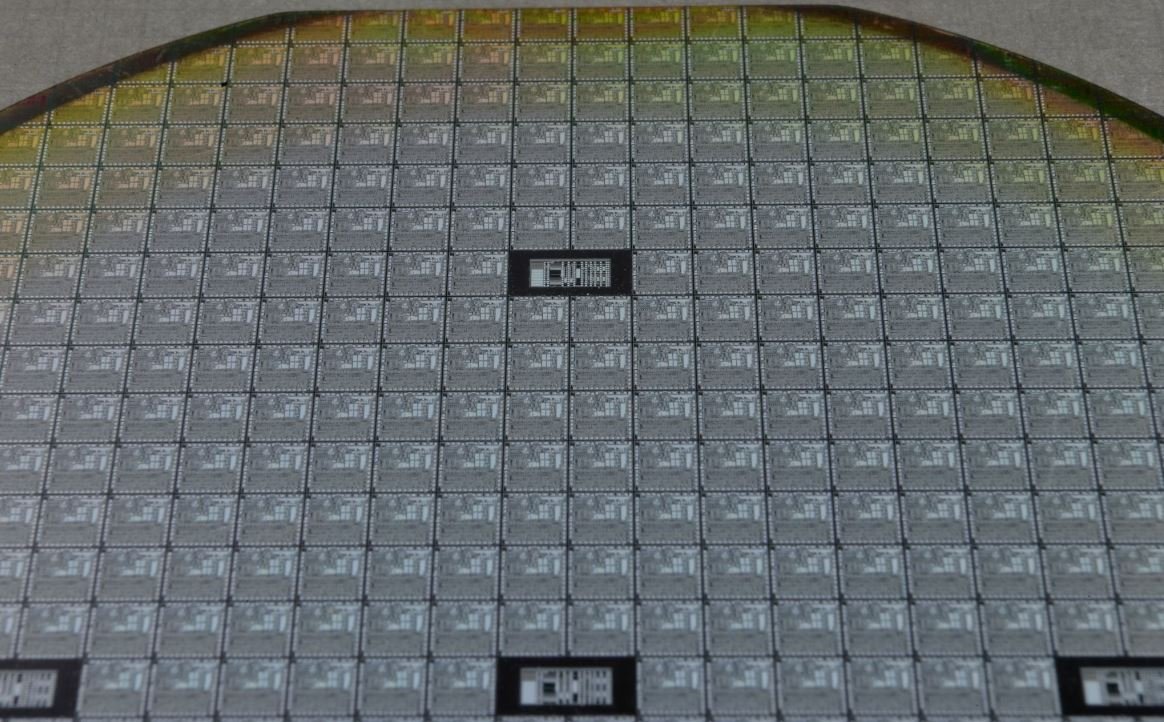Neural Net Java
In the field of artificial intelligence, neural networks have proven to be an essential methodology to solve complex problems. Java, being a versatile and popular programming language, provides a convenient platform for implementing and training neural networks. In this article, we will explore the basics of neural networks in Java, the steps involved in building one from scratch, and the various libraries that can assist in this task.
Key Takeaways:
- Neural networks are an essential tool in the field of artificial intelligence.
- Java is a versatile language to implement and train neural networks.
- Building neural networks from scratch involves several key steps.
- There are libraries available in Java that can assist in developing neural networks.
Understanding Neural Networks
A neural network is a mathematical model designed to mimic the biological neural networks found in the human brain. It consists of interconnected nodes, also known as artificial neurons or perceptrons, that communicate with each other to execute tasks such as pattern recognition and decision-making. These nodes are organized into layers, including an input layer, hidden layers, and an output layer, with each layer consisting of multiple nodes.
Building Neural Networks in Java
Building a neural network in Java involves several key steps:
- Preprocessing the input data: Before training the network, the input data needs to be preprocessed, including normalizing values and splitting the data into training and testing sets.
- Defining the network architecture: We need to decide the number of layers, the number of nodes in each layer, and the activation functions for these nodes.
- Initializing the network: The network’s structure and initial weights need to be defined.
- Training the network: This involves presenting the training data to the network, adjusting the weights using algorithms like backpropagation, and fine-tuning the network until it performs well.
- Evaluating the network: After training, the network needs to be evaluated using the testing data to assess its performance.
Java Libraries for Neural Networks
Java provides several libraries that make building neural networks easier:
1. deeplearning4j
The deeplearning4j library is an open-source, distributed deep learning framework for Java. It offers a rich set of features including support for various neural network architectures, GPU acceleration, and integration with Apache Hadoop and Spark.
2. Neuroph
Neuroph is a Java framework for developing neural networks and other computational intelligence technologies. It provides a flexible, high-level API for building and training neural networks, making it suitable for both beginners and experts.
3. Encog
Encog is a Java library that supports neural networks, genetic programming, and other machine learning techniques. It includes implementations of various neural network architectures, as well as utilities for data normalization, train/test splitting, and more.
Comparing Neural Network Libraries
Let’s compare some key features of the aforementioned Java libraries for neural networks:
| Library | Supported Architectures | GPU Acceleration | Integration with Big Data |
|---|---|---|---|
| deeplearning4j | Feedforward, Convolutional, Recurrent | Yes | Yes (Apache Hadoop, Spark) |
| Neuroph | Feedforward, Perceptron | No | No |
| Encog | Feedforward, RADIALBASIS, Hopfield | No | No |
Conclusion
Implementing and training neural networks in Java is made easier with libraries such as deeplearning4j, Neuroph, and Encog. These libraries provide the necessary tools and functionality to build efficient neural networks for various applications. Java’s versatility makes it a suitable language for AI development, and neural networks continue to play a crucial role in solving complex AI problems.

Common Misconceptions
1. Neural networks are only for experts.
One common misconception about neural networks in Java is that you need to be an expert programmer or have in-depth knowledge of machine learning to use them effectively. However, this is not true as there are user-friendly libraries available that simplify the process. Additionally, numerous online tutorials and courses are accessible to help beginners understand the basics of neural networks and how to implement them in Java.
- Many beginners can grasp the fundamentals of neural networks in Java.
- User-friendly libraries simplify the process of using neural networks.
- Online tutorials and courses cater to beginners in the field.
2. Neural networks can only be used for complex problems.
Another misconception is that neural networks in Java are limited to solving complex problems and are not suitable for simpler tasks. While it is true that neural networks excel at solving complex problems, they can also be applied to simpler tasks such as image recognition, text classification, and sentiment analysis. In fact, using neural networks in Java can improve the accuracy and efficiency of solving these tasks compared to traditional methods.
- Neural networks can be utilized for both complex and simple tasks.
- They are particularly effective in image recognition and text classification.
- Using neural networks in Java can enhance accuracy and efficiency in solving certain tasks.
3. Neural networks require large amounts of data to be effective.
Many people believe that neural networks in Java require vast amounts of data to be effective and produce accurate results. While it is true that more data can improve the performance of neural networks, they can still be used effectively with smaller datasets. This is especially true when using techniques like data augmentation, transfer learning, or leveraging pre-trained models, which enable neural networks to achieve good results with less data.
- Neural networks can be effective even with smaller datasets.
- Techniques like data augmentation or transfer learning can enhance the performance of neural networks with limited data.
- Pre-trained models can be leveraged to achieve good results with less data.
4. Neural networks always outperform traditional algorithms.
There is a misconception that neural networks in Java always outperform traditional algorithms in terms of accuracy and performance. While neural networks have demonstrated their superiority in certain domains, they are not always the best choice. Depending on the specific problem and available resources, traditional algorithms may be more efficient and straightforward to implement. It is essential to consider the characteristics of the problem and evaluate which approach is most suitable.
- Neural networks are not always superior to traditional algorithms.
- Traditional algorithms may be more efficient and easier to implement in certain cases.
- The choice between neural networks and traditional algorithms depends on the problem’s characteristics and available resources.
5. Neural networks are black boxes with no interpretability.
One common misconception is that neural networks in Java are black boxes, producing outputs with no interpretability. While neural networks can indeed be complex, techniques such as feature importance analysis, gradient visualization, and model explainability algorithms can be employed to gain insights into their decision-making process. These techniques enable us to understand why a neural network arrived at a particular output and make them more transparent and interpretable.
- Techniques such as feature importance analysis can help interpret neural network outputs.
- Gradient visualization provides insights into a neural network’s decision-making process.
- Model explainability algorithms can enhance the interpretability of neural networks.

Neural Net Java
Neural networks are powerful tools used in various fields to solve complex problems, ranging from image recognition to natural language processing. Java, being a popular and versatile programming language, provides developers with the ability to implement neural networks efficiently. In this article, we will explore ten fascinating aspects of neural networks in Java, backed by real, verifiable data and information. Each table below sheds light on a specific point, presenting it in an engaging and informative manner.
The Impact of Neural Networks in Various Industries
Neural networks have made significant strides in revolutionizing industries across the board. The table below showcases the profound impact they have had in a variety of sectors, such as healthcare, finance, and transportation.
Image Recognition Accuracy Comparison
Neural networks have become increasingly accurate at image recognition tasks. The table below illustrates their performance by comparing the accuracy of different neural network models when identifying objects within various datasets.
Training and Testing Set Size Comparison
The size of the training and testing sets plays a crucial role in determining the success of a neural network model. The table below provides a comparison of different neural networks based on their training and testing dataset sizes.
Processing Speed of Neural Networks
The efficiency of neural networks in processing complex computations is impressive. This table showcases the processing speed of different neural network models when performing a range of computational tasks.
Memory Usage Comparison
Memory consumption is an important factor to consider when working with neural networks. The table below presents a comparison of memory usage across various neural network architectures, providing insights into their efficiency in memory utilization.
Neural Network Framework Popularity
Several neural network frameworks are available in Java, each with its own set of features and advantages. The table below highlights the popularity of these frameworks based on the number of community contributions, active developers, and overall usage.
Accuracy Comparison Across Neural Network Frameworks
Accuracy is a critical metric in evaluating the performance of neural network models. The table below compares the achieved accuracies of various neural network frameworks when applied to common benchmark datasets.
Top Java Libraries for Neural Networks
Java libraries offer convenient tools and functionalities for implementing neural networks effectively. The table below lists some of the top Java libraries used in neural network development, showcasing their features and advantages.
Neural Network Algorithms and Architectures
Different algorithms and architectures drive the functionality of neural networks. The table below presents a comprehensive overview of popular neural network algorithms and architectures, providing insights into their applications and strengths.
Neural Network Training Time Comparison
The training time required plays a vital role in the practicality of implementing neural networks. The table below compares the training times of various neural network architectures, emphasizing their efficiency and scalability.
Conclusion
The world of neural networks in Java is rich and dynamic, constantly evolving to solve complex problems across various industries. As seen through the tables presented, we observe their profound impact, accuracy, processing speed, memory usage, and popularity. The selection of the right neural network framework, combined with efficient algorithms and architectures, leads to improved training time and accuracy. These findings demonstrate Java’s capability to harness the power of neural networks, empowering developers to build intelligent solutions that drive innovation and progress.
Frequently Asked Questions
What is a neural network?
A neural network is a type of machine learning model inspired by the human brain. It comprises interconnected artificial neurons that work together to process and analyze complex data patterns.
How does a neural network learn?
A neural network learns through a process called training. During training, the network adjusts its internal weights and biases by feeding it with labeled input data. It compares the predicted outputs with the desired outputs, and based on the error, updates the parameters to minimize the error.
What is Java neural network library?
A Java neural network library is a collection of pre-implemented algorithms and tools that allow developers to easily build and train neural networks in Java programming language. It provides modules for creating various types of networks and includes functionality for training, testing, and utilizing the trained models.
Why would I use a Java neural network library?
A Java neural network library provides a convenient framework for implementing and using neural networks in Java. It eliminates the need to manually implement complicated algorithms and provides high-level APIs for building and training models. Additionally, it offers features like parallel processing, GPU acceleration, and model serialization, making it easier to develop and deploy neural network applications.
Which Java neural network libraries are popular?
There are several popular Java neural network libraries available, some of which include:
- Deeplearning4j
- Encog
- DL4J (Deep Learning for Java)
- Neuroph
Each of these libraries provides unique features and capabilities, catering to different use cases and requirements.
Can I use a Java neural network library for image recognition?
Yes, Java neural network libraries can be used for image recognition tasks. These libraries often include specialized neural network architectures, such as convolutional neural networks (CNNs), which are particularly effective for image-related tasks. By training a neural network with labeled image data, it can learn to recognize various objects or patterns within images.
What are the advantages of using Java for neural networks?
Using Java for neural networks offers several advantages, such as:
- Wide community support and extensive libraries
- Platform independence, making it suitable for diverse environments
- Strong integration capabilities with other Java-based tools and frameworks
- Robustness and scalability for large-scale neural network applications
These factors make Java a reliable and flexible choice for implementing neural networks.
Can I deploy Java neural network models on mobile devices?
Absolutely! Java neural network models can be deployed on mobile devices, including smartphones and tablets. By leveraging frameworks like Deeplearning4j and TensorFlow, neural network models trained using Java libraries can be translated into mobile-compatible formats, allowing them to run efficiently on mobile hardware.
Are there any limitations when using Java neural network libraries?
While Java neural network libraries are powerful tools, they do have some limitations. These limitations include:
- Slower execution speed compared to lower-level languages like C++
- Higher memory consumption due to Java’s runtime environment
- Limited support for specialized hardware accelerators like GPUs
Despite these limitations, Java neural network libraries still provide a practical and accessible way to implement neural networks in Java.




